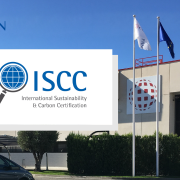EU-Batteries Regulation: Statement from Accurec Recycling
The full statement on the proposal of the new Battery Regulation (Batteries Regulation 2020/353 (COD), repealing Directive 2006/66/EC and amending Regulation (EU) No 2019/1020) on behalf of Accurec Recycling GmbH:
The recycling industry welcomes the draft of a new battery regulation, it contains in large parts important aspects and objectives that include the interests of green circular economy and recycling
industry. It considers important problematic aspects of daily end of life management of batteries. The recovery of specific valuable and critical raw materials is introduced as well as improvements in recycling and collection efficiencies for portable batteries. However, this comprehensive legislative proposal still needs a few clarifications and detailed definitions. Our comments are detailed below:
Harmonization with existing regulations:
Harmonization with substance law has to be adapted to the existing regulation (e.g. substance restrictions in REACh Annex XVII). The classification and labelling of batteries is done according to CLP regulation (hazard classes). If batteries are in a waste status, the Waste Framework Directive (2008/98/EC) and the European Waste Catalogue (2000/532/EC) has to be applied. There are
currently no specific waste code numbers for the rapidly increasing market of Li-ion batteries (see exemption in Directive 2000/532/EU/European, see also examples in the European waste catalogue). It is appropriate to introduce specific waste code numbers at the same time. The current practice in European countries shows a very different use of nonhazardous and hazardous waste code numbers for Li-Ion-batteries. This inconsistency hinders appropriate recycling of the batteries, competition and decent investments.
Introduction of collection quotas for all batteries:
The efforts of take-back systems in various EU countries, some of which are exemplary, have an impact in resulting household collection rates of 45-60% for portable batteries. After the interim
targets have been already achieved in 2012 and 2016 in most countries, an increase in the quota with the aim of higher recovery of recyclable materials is reasonable and necessary. The proposed
increase of targets appear ambitious, but these targets only develop its sustainable force in context of a transparent and unambiguous definition of this collection quota.
Regarding all batteries beside household application (industrial, automotive, etc.) a collection quota is essential. Without this transparency, it cannot be prevented that these collected quantities are captured by the category “portable batteries”. For example, the high recycling rates of more than 90% of automotive batteries published by some industry representatives cannot refer to the
quantities placed on the market in the EU, because the loss of end-of-life vehicles (including spent batteries) is still very high. The last published figures in the EU showed the losses of several million vehicles per year, which disappear from the European market and end up in countries with lower standards and high losses of raw materials. Collection rates for all batteries are therefore urgently needed for a better transparency of the market, a stronger take-back and improvement of secondary raw material management.
Labelling requirements (QR code/battery pass):
The requirements for labelling and the issuing of a battery pass are to be welcomed in principle. The information contained also must meet the requirements of the recycling processes in order to achieve cost-optimized recycling with high-quality products. The currently planned information to be provided is unspecific and need to be precisely defined in cooperation with the recycling industry.
Recycling efficiency and share of “recovered material”:
The first-time enactment of a recycling efficiency especially for certain metals such as lithium, cobalt, nickel and copper is welcomed. The plausibility of demanding quotas up to 95% need to be discussed at scientific level. In order to optimize recycling costs, it is necessary to adjust the quotas, so that they can be achieved at industrial level without exceeding costs. In addition, further research activities would be necessary as well as financial support for new recycling technologies in the entire value chain (s. definition of “extended producer responsibility” in the Waste Framework Directive). In order to keep the documentation and statistics demands managable, already established systems should be tested for their applicability and transferability (e.g. from WEEE).
Harmonization with existing legislation from environmental law:
For market participants, it is of great importance that all environmental regulations are clear and understandable. With the presentation of the new EU Battery Regulation 2020/353 (COD), for the first time there is a uniform regulation throughout Europe for which there is no need for national transposition. This is of great importance for manufacturers and recyclers operating throughout Europe. In addition, however, there are other European wide regulations that are also affected by the new battery regulation (e.g. ELV Directive 2000/53/EC and its 27 national implementation requirements, WEEE 2012/19/EU and its 27 national implementation requirements), which need to be revised. In any case, an overlapping and non-harmonized regulation for the important market of batteries, electrical appliances and vehicles must be avoided.
Source: Accurec Recycling GmbH, Kummer Umweltkommunikation GmbH (Germany, February 22, 2021)






